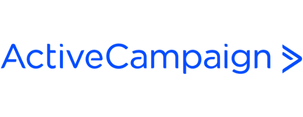If you’re just starting out as a course creator, chances are you don’t have investors knocking on your door. But here’s the good news. You don’t need a huge budget to launch a profitable online course in 2025. With the right mindset, strategy, and tools, you can bootstrap your way to success without loans, debt, or expensive software.
This blog will walk you through how to fund your online course startup using simple, proven methods and how to keep your costs low without cutting corners.
Start With What You Know
You don’t need to be a guru with thousands of followers to sell a course. You just need to teach something people want to learn. Think about your current skills. What do people ask you for help with? That’s your first clue.
Focus on a topic that’s niche, specific, and easy to explain. For example, instead of “marketing,” go with “Instagram growth for realtors” or “email funnels for Etsy sellers.” This will help you stand out and make marketing easier.
Choose a Free or Low-Cost Platform
When you’re bootstrapping, every dollar matters. Avoid expensive platforms in the early stages. Instead, use beginner-friendly tools with free tiers or trial periods:
- Thinkific: Includes 1 course and limited features to get started.

Starting at $74/month
Start your 30 day trial and save 25% with yearly plans
Key Features
A platform for creating and selling online courses
Customizable course design with multimedia support
Integrated tools for marketing, payments, and student engagement
Why We Recommend It
Provides an easy-to-use platform for creating, marketing, and selling online courses
Offers customization options to match your brand and enhance the learning experience
Includes built-in tools for student communication, payment processing, and course promotion
Pros & Cons
- User-friendly course creation tools
- It's suitable for various business sizes
- Comprehensive marketing and payment integration
- Limited customization options on lower-tier plans
- Advanced features require a higher-tier subscription
- Teachable: Offers a basic plan that’s affordable for new creators.
- Notion: Surprisingly useful for building course hubs or digital guides.

Starting from $0/month
Save 20% on annual plan
Key Features
All-in-one workspace for note-taking, project management, and collaboration
Customizable templates for personal and team use
Integration with other apps for seamless workflow management
Why We Recommend It
Combines multiple productivity tools into one platform, making it easier to organize work and personal projects
Offers highly customizable templates to fit various workflows and team needs
Facilitates collaboration by allowing team members to work together in real-time
Pros & Cons
- Versatile and highly customizable
- Great for both individual and team use
- Easy integration with other tools and apps
- Can be overwhelming for new users due to its many features
- Limited offline functionality without an internet connection
- YouTube (Unlisted Videos): A quick, free way to host your course videos.
The goal is to start making money before you commit to a premium setup.
Use Pre-Sales to Fund Your Build
Here’s a powerful tip. Don’t wait to finish your course before launching. Instead, sell it as a “beta version” or pre-order. Let people know they’ll get early access, and that the course is in progress.
This creates urgency, saves your time, and gives you valuable feedback from real users. Tools like Gumroad, Podia, or even a Stripe payment link can help you accept payments fast.
Build an Email List Before You Launch
Most course creators skip this, and regret it. Even with a small email list, you can launch your course more successfully. You don’t need thousands of followers. Just a list of people who are actually interested.
Start by offering a free resource (PDF, checklist, or video) in exchange for an email. Use a free tool like:
- Kit
Starting from $25/month
Start your 14-day free trial
Key Features
Email marketing automation for creators and small businesses
Customizable email templates and landing pages
Subscriber management with advanced segmentation and tagging
Why We Recommend It
Simplifies email marketing with easy automation tools designed for creators and small businesses
Provides customizable templates and landing pages to enhance engagement
Helps organize and target subscribers with advanced segmentation for more effective campaigns
Pros & Cons
- User-friendly platform with powerful automation features
- Great for creators and small businesses
- Flexible subscriber management tools for targeted campaigns
- Limited advanced features compared to some other email marketing platforms
- Higher pricing for larger email lists or advanced plans
- ActiveCampaign

Starting from $15/month
Start your free trial - StartupWise subscribers save 15%
Key Features
Advanced email marketing automation
CRM and sales automation tools
Detailed reporting and analytics
Why We Recommend It
- Provides powerful automation features allowing businesses to create personalized customer journeys, nurture leads, and drive conversions.
- Provides email, SMS, and cross-channel tools to power relevant experiences
Pros & Cons
- Powerful automation features
- Integrates well with other tools and platforms
- Scalable for businesses of all sizes
- Can be complex for beginners
- Pricing may be high for small businesses with limited budgets
- Brevo (formerly Sendinblue)

Starting from $8.08/month
Get 50% off with our coupon code: STARTUPWISE
Key Features
Multichannel Marketing Automation: Engage customers through email, SMS, and push notifications within a single platform.
Pre-built Automation Workflows: Utilize ready-made workflows like welcome series and cart abandonment to streamline customer engagement.
Advanced Segmentation: Target specific customer groups based on behavior, preferences, and purchase history for personalized campaigns.
Why We Recommend It
Brevo offers an all-in-one solution for businesses to streamline their marketing and customer relationship management. Its user-friendly interface and automation tools make it suitable for businesses aiming to enhance engagement and drive growth.
Pros & Cons
- Versatile Communication Channels: Manage emails, SMS, WhatsApp, and chat in one place.
- User-Friendly Interface: Intuitive design simplifies campaign creation and management.
- Affordable Pricing: Competitive plans suitable for small to medium-sized businesses.
- Limited Advanced Features: Some sophisticated functionalities may be lacking compared to specialized platforms
- Integration Constraints: Fewer third-party integrations than some competitors
Once you have their email, stay in touch weekly. Share tips, stories, or sneak peeks of your course to warm them up for launch.
Use Free Tools to Create Course Content
Don’t spend money on a fancy camera or pro editing software. Some of the best courses were recorded with a smartphone or webcam. Here are free tools that can help:
- Canva: Design your course slides or promo graphics.
- Loom: Record your screen and voice.
- CapCut or iMovie: Simple editing with zero cost.
- Zoom: Record live sessions and turn them into modules.
- ChatGPT: Help you outline, script, or write lesson summaries.
Focus on clarity, not perfection. Your students care more about results than production value.
Use Your Time as Capital
If you don’t have money, lean into time. Do things that don’t scale yet — like personally messaging people on Instagram, answering DMs, or jumping on Zoom calls with early students.
This phase won’t last forever. But in the beginning, this hustle builds relationships and momentum. And it’s completely free.
Partner with Others
If you know someone who has an audience but not a course, partner up. Offer to build the course, write the content, or manage the backend. In return, they promote it to their followers and split the revenue with you.
This saves you from having to spend on ads or content creation — and helps you build social proof faster.
Repurpose Content to Attract Students
You don’t need a full marketing team to create content. Repurpose what you already have:
- Turn a blog post into a video.
- Turn a video into short TikToks or Reels.
- Turn a tip into a carousel on Instagram.
- Turn FAQs into tweets or threads.
This makes you look consistent and saves you time.
Offer 1-on-1 Sessions to Fund Course Creation
One smart move is to offer coaching or consulting before the course is ready. Charge for your time and use that income to build your course. Plus, working 1-on-1 gives you real-life experience with the problems your course will solve, so you’ll create better content later.
Track Everything and Stay Lean
Use a simple spreadsheet to track income and expenses. You don’t need bookkeeping software right away. Keep your overhead low. Don’t buy tools or services until you’re sure they’ll help you grow or save time.
Staying lean doesn’t mean being cheap. It means being smart with every dollar.
Bonus: Consider Revenue-Based Funding with Companies Like Revenued
If your course starts earning consistent income but you need help with cash flow, companies like Revenued offer funding options that don’t require traditional credit checks. They use your revenue as the main qualifier and can give you a business card and cash advance for marketing, tools, or scaling. It’s not for brand-new creators. But once you’re growing and want to scale faster, it’s worth exploring.
Key Features
Business card with no credit check, based on revenue instead
Flexible spending power that grows with your business
Cashback rewards on every purchase
Why We Recommend It
The Revenued Business Card is ideal for small businesses that need flexible funding but don’t qualify for traditional credit. It’s based on your revenue, not your credit score, making it easier to get approved and grow.
Pros & Cons
- No credit check required
- Cashback on all purchases
- Fast approval and access to funds
- Only available to businesses with consistent revenue
- Daily repayment model may not suit everyone
Final Thoughts
Bootstrapping your online course startup is possible and often the smartest path. You stay in control, build lean, and create a course that actually solves real problems. Focus on progress, not perfection. Start small, build an audience, and reinvest your early wins into better tools and growth. You don’t need permission. You just need to start.


